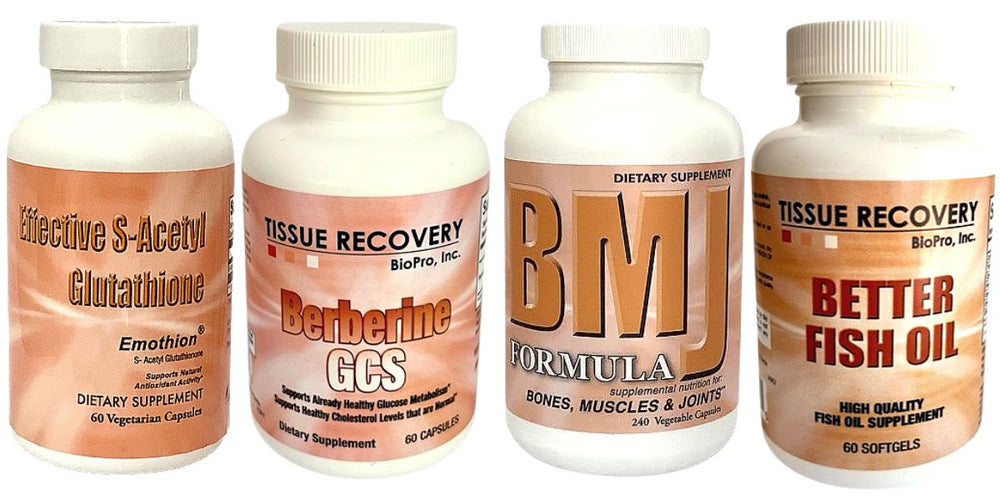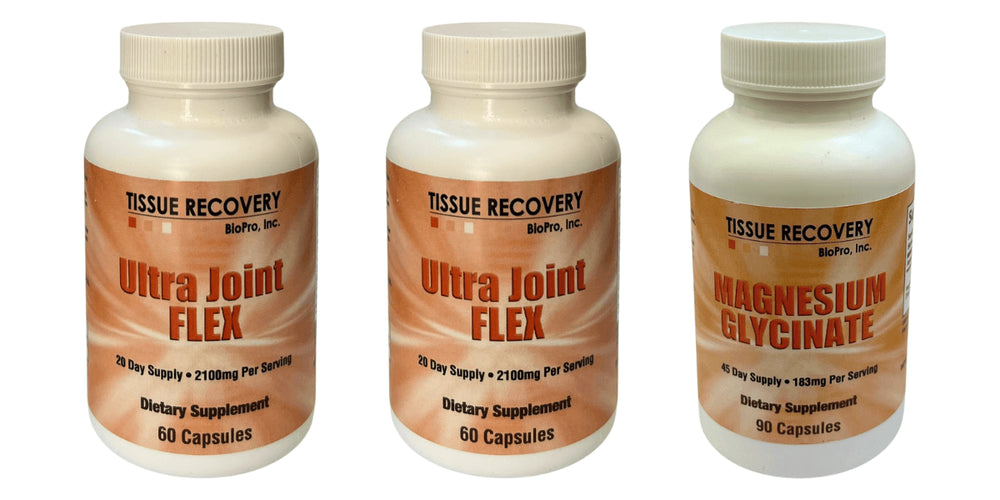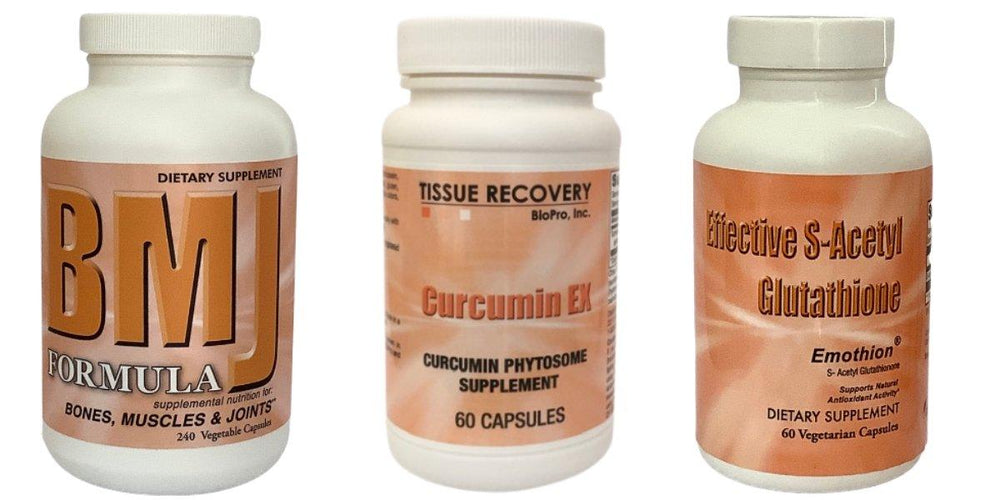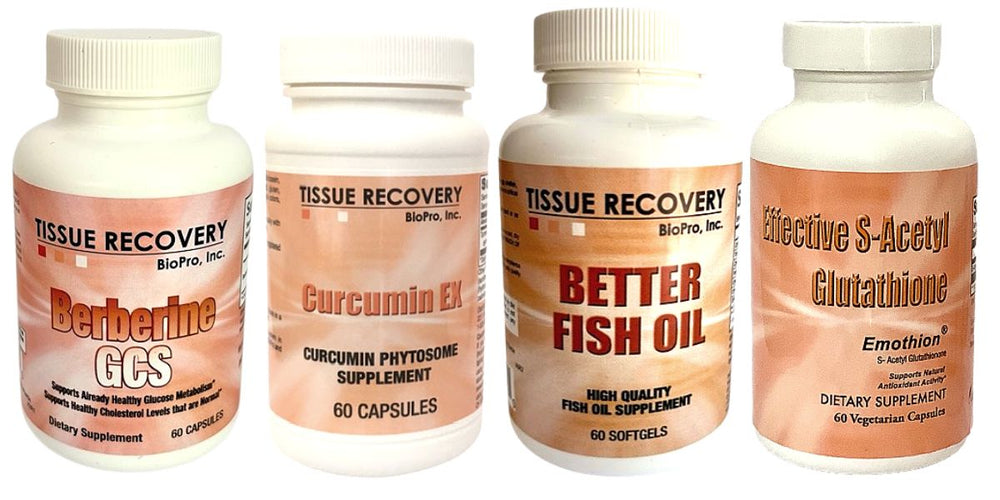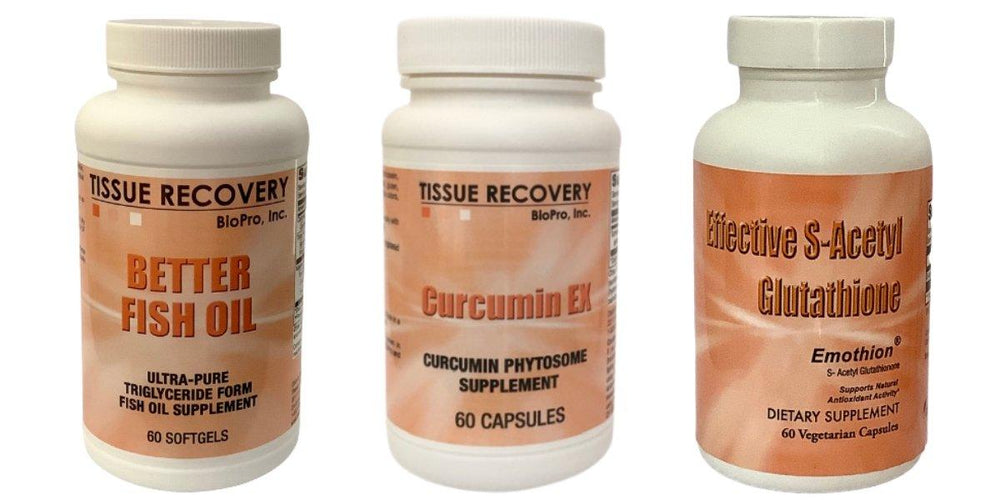No products in the cart.
Cardiovascular System Bundle
Cardiovascular System Bundle
$173.70
$163.70
163.70
BioPro, Inc. and TissueRecovery have closed. What's next?
Free radical damage and inflammation are both risk factors for cardiovascular disease. The inflammatory marker hs-CRP is a strong predictor of cardiovascular risk (Ridker PM, et al. 2000, Ridker PM, et al. 2002, Shah SH, Newby LK, 2003). Oxidative stress markers has been found to be increased in patients with increased cardiovascular risk, and the antioxidant glutathione was significantly reduced (Madisetty MK, et al. 2016).
Effective S-Acetyl Glutathione
Glutathione is your primary defense against aging. Because cardiovascular risk was increased in people with reducing glutathione levels, and oxidative stress markers have also been found to be increased, glutathione is recommended (Madisetty MK, et al. 2016, Buijjsse B, et al. 2012). It's a very effective antioxidant that the body makes to protect itself from free radical damage (oxidative stress). It can help repair cells that are damaged by stress, radiation, pollution, infection, and other illnesses. Read full scientific explanation........Curcumin EX
Because the inflammatory marker hs-CRP is a strong predictor of cardiovascular risk, curcumin is recommended (Ridker PM, et al. 2000, Ridker PM, et al. 2002, Shah SH, Newby LK, 2003). Compared with a placebo, supplementation with curcumin was associated with a significant reduction in C-reactive protein (CRP) (Sahebkar A, 2014). Research has documented the many benefits of curcumin (found in turmeric spice), but regular curcumin is hard to absorb. Our formula improves the intake of this beneficial substance into the cells. Read full scientific explanation..........





